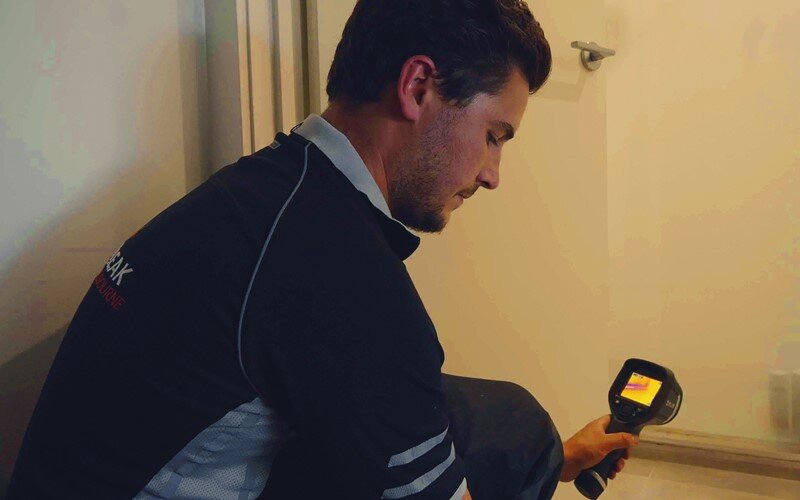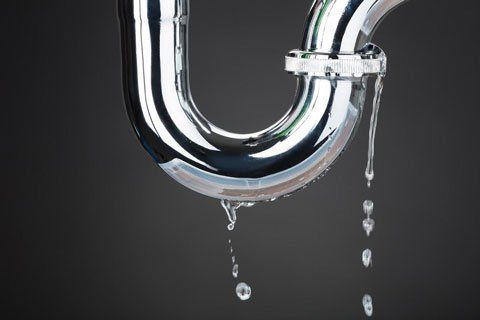6 Ways to Discover Surprise Water Leaks in Your House
6 Ways to Discover Surprise Water Leaks in Your House
Blog Article
Everyone seems to have their personal perception in relation to Finding hidden leaks.

Early discovery of leaking water lines can mitigate a possible catastrophe. Some little water leakages might not be noticeable.
1. Take A Look At the Water Meter
Every residence has a water meter. Checking it is a surefire way that aids you discover leakages. For beginners, switch off all the water resources. Make sure no person will flush, utilize the faucet, shower, run the washing device or dishwashing machine. From there, go to the meter and watch if it will change. Since no one is utilizing it, there ought to be no motions. That indicates a fast-moving leak if it moves. Furthermore, if you spot no changes, wait a hr or two and inspect back again. This suggests you might have a slow leakage that might even be below ground.
2. Inspect Water Consumption
If you identify sudden changes, regardless of your consumption being the very same, it indicates that you have leakages in your plumbing system. An abrupt spike in your costs suggests a fast-moving leak.
Meanwhile, a consistent rise monthly, despite the exact same routines, shows you have a slow leak that's additionally gradually rising. Call a plumber to thoroughly check your building, particularly if you feel a warm area on your floor with piping beneath.
3. Do a Food Coloring Examination
When it comes to water intake, 30% comes from toilets. If the shade somehow infiltrates your dish during that time without flushing, there's a leakage between the container and dish.
4. Asses Exterior Lines
Don't forget to check your exterior water lines too. Needs to water seep out of the connection, you have a loosened rubber gasket. One little leakage can lose heaps of water as well as spike your water expense.
5. Check and Examine the Situation
Home owners ought to make it a habit to check under the sink counters and even inside cabinets for any kind of bad odor or mold and mildew growth. These two warnings show a leakage so timely attention is called for. Doing regular examinations, also bi-annually, can save you from a significant issue.
Much more importantly, if you recognize your home is currently old, keep a watchful eye on your heaters, hoses, pipelines etc. Check for stainings as well as weakening as the majority of pipes and also home appliances have a life span. They will likewise normally weaken due to wear and tear. If you suspect leaking water lines in your plumbing system, don't wait for it to escalate. Call a professional plumber right now so you do not end up with a terrible mess in your house.
Early detection of leaking water lines can minimize a possible catastrophe. Some little water leakages may not be visible. Inspecting it is a guaranteed method that helps you find leaks. One small leakage can waste lots of water as well as surge your water expense.
If you presume dripping water lines in your plumbing system, do not wait for it to intensify.
WARNING SIGNS OF WATER LEAKAGE BEHIND THE WALL
PERSISTENT MUSTY ODORS
As water slowly drips from a leaky pipe inside the wall, flooring and sheetrock stay damp and develop an odor similar to wet cardboard. It generates a musty smell that can help you find hidden leaks.
MOLD IN UNUSUAL AREAS
Mold usually grows in wet areas like kitchens, baths and laundry rooms. If you spot the stuff on walls or baseboards in other rooms of the house, it’s a good indicator of undetected water leaks.
STAINS THAT GROW
When mold thrives around a leaky pipe, it sometimes takes hold on the inside surface of the affected wall. A growing stain on otherwise clean sheetrock is often your sign of a hidden plumbing problem.
PEELING OR BUBBLING WALLPAPER / PAINT
This clue is easy to miss in rooms that don’t get much use. When you see wallpaper separating along seams or paint bubbling or flaking off the wall, blame sheetrock that stays wet because of an undetected leak.
BUCKLED CEILINGS AND STAINED FLOORS
If ceilings or floors in bathrooms, kitchens or laundry areas develop structural problems, don’t rule out constant damp inside the walls. Wet sheetrock can affect adjacent framing, flooring and ceilings.
https://www.servicemasterbyzaba.com/blog/how-to-detect-water-leakage-in-walls/

We had been made aware of that article about Detecting hidden plumbing leaks from an associate on a different web page. Are you aware of someone else who is involved in the niche? Why not promote it. I appreciate reading our article about Locating water leaks.
Report this page